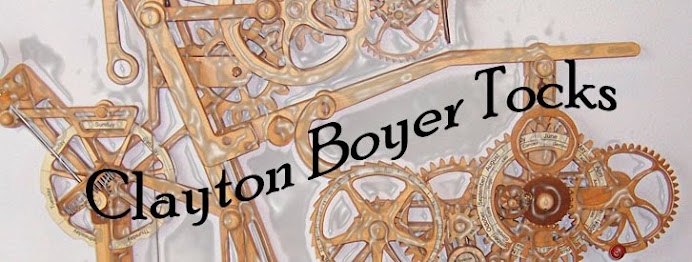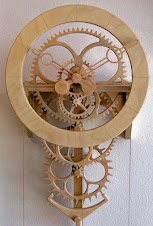Aloha Clayton,
One thought and one
question.
Question: How do you cut
out such small pieces like end caps without losing your finger tips? The larger
pieces are okay but the tiny ones I am not sure how to tackle. Any suggestions?
Thought – it would be
helpful if on one page of each plan was listed each piece needed to complete
the clock. Right now I just make a mark on each piece on the page that I have
cut from wood. It works but I am afraid I will miss something.
Please forgive me if I am
being a bother but I don’t know how to contact other scrollsawers about cutting
small pieces for instance. I am determined to make Simplicity because it is so
beautiful.
Thanks again Clayton.
Scott J
Aloha Scott, nice to hear from you, and I am happy to help.
I also appreciate suggestions from builders. My whole purpose,
since the very beginning, has been to create the most fun, error-free,
easy-to-build-from plans humanly possible.
When
looking through my plans, the three places that are the very most helpful in
finding the location of each individual clock part are the Front View, Side
View, and Arbors and Spacers page. That Arbors and Spacers page shows
exactly where each part fits on the rods and tubes, and the Front and Side
Views show the overall location of each part of the clock.
As
to how to cut the small parts accurately - I don't.
For
a very small part like a cap I first drill the hole, and then cut the part out
roughly, and then take it to the sander and sand that small part to the line.
If it is an especially small cap, I'll cut it out roughly, stick the
arbor into the hole and chuck the arbor into a hand drill, and then take that
to the sander. That way fingers do not even get close to the spinning
sandpaper.
Also,
when it comes to cutting other small parts, such as the pinions, you can use
the same philosophy. The dedendum (the valley between the teeth) should
be cut accurately at the scrollsaw, but the outer parts of the tooth (the
addendums) can be cut roughly and then finish sanded to the line at the sander.
Here
are a couple of pix as examples...notice I am using a zero tolerance insert
clamped on the sander's table to keep the small parts from falling between the
sander's table and the belt. #1 in the picture is the dedendum that
should be cut accurately. #2 is an accurately cut addendum, and #3
addendum will be touched up at the sander, and finished to the line.
I hope that helps increase the fun of building your Simplicity.
My Simplicity spent its first five (+) years out in my shop
keeping me company as I worked, and getting covered daily with sawdust (a blast
from the compressed air cleaned it right out whenever it stopped, but I have to
say it was really a trooper and could run through layers of sawdust!).
Simplicity's beautiful song was the first thing to greet me in the
morning as I opened the doors.
Then about seven years ago I moved the Simplicity into our living
room where it now shares the opposite end of our fireplace mantle with the
Zinnia. They make beautiful fireplace finials!
I hope you enjoy yours just as much. Aloha, Clayton






